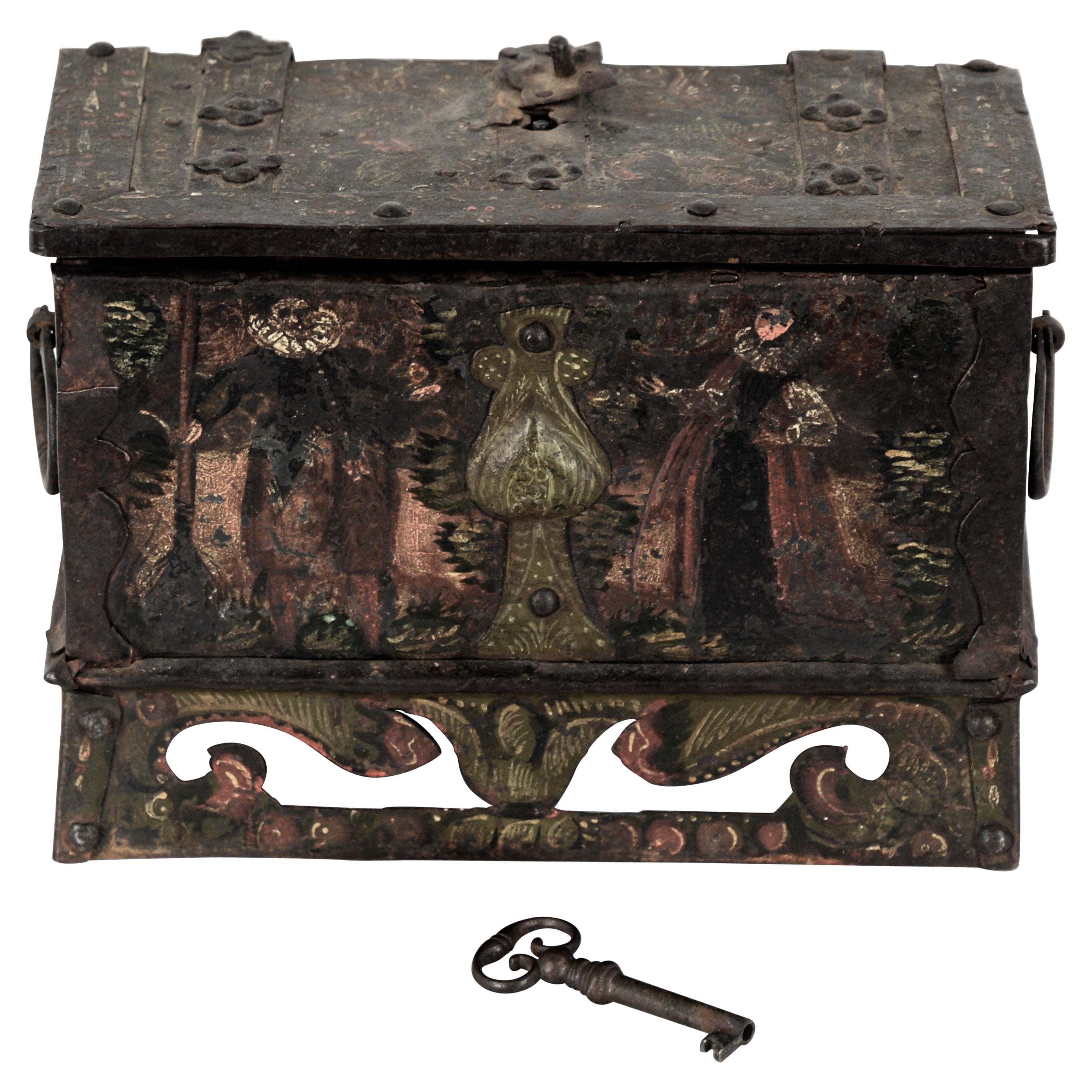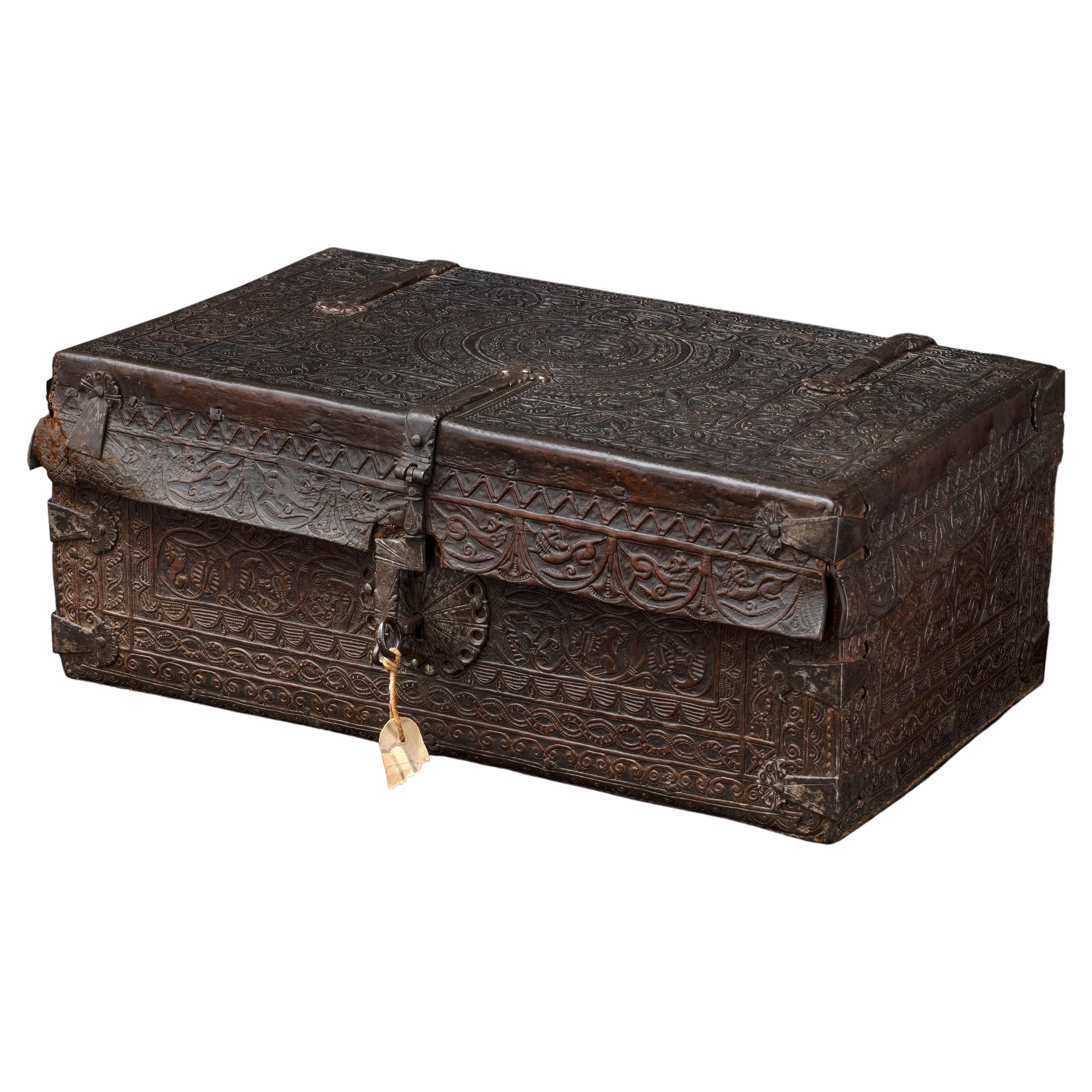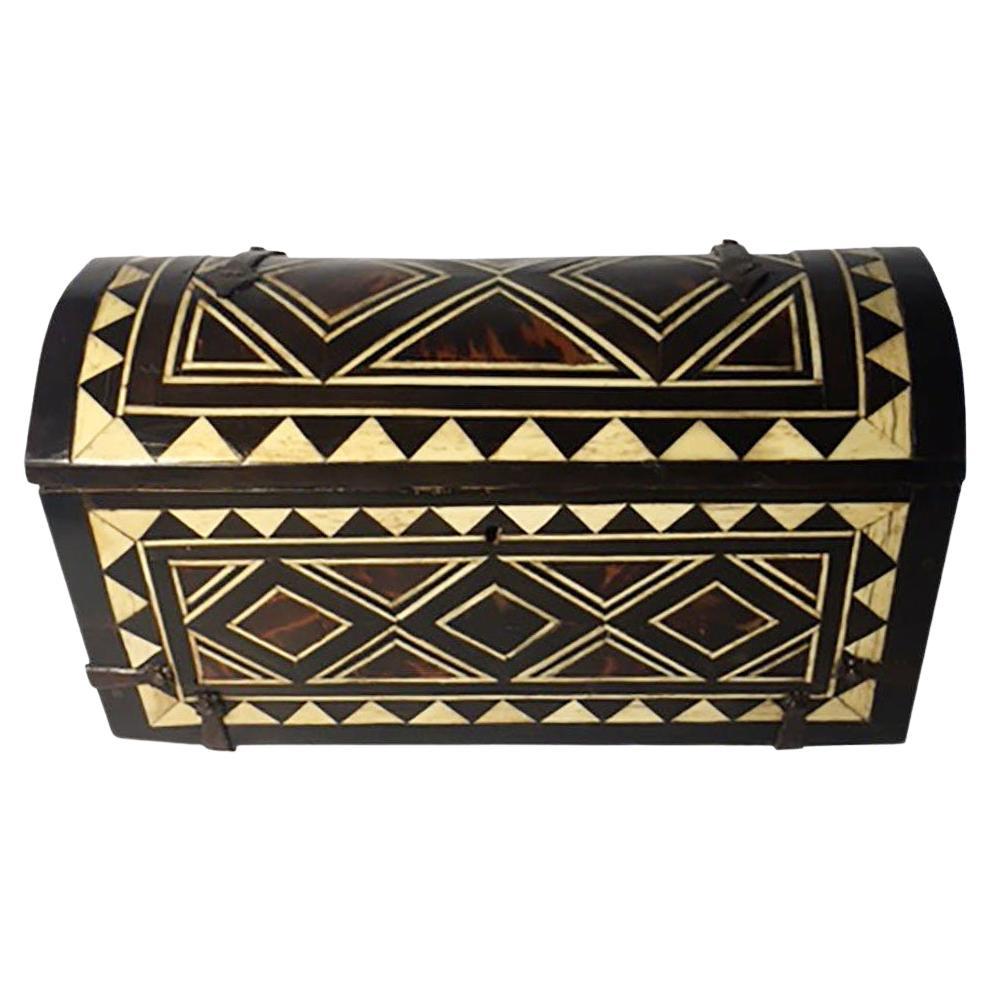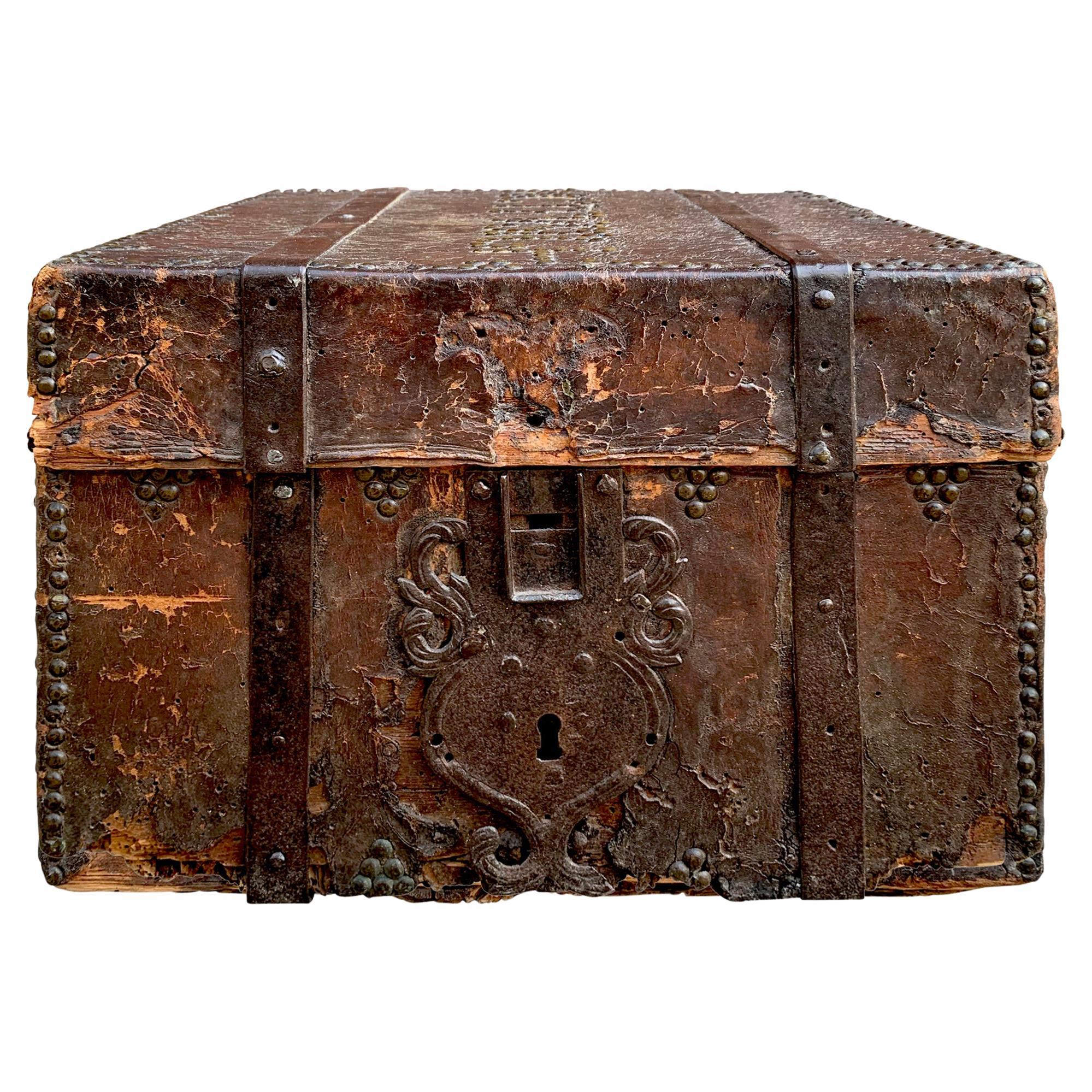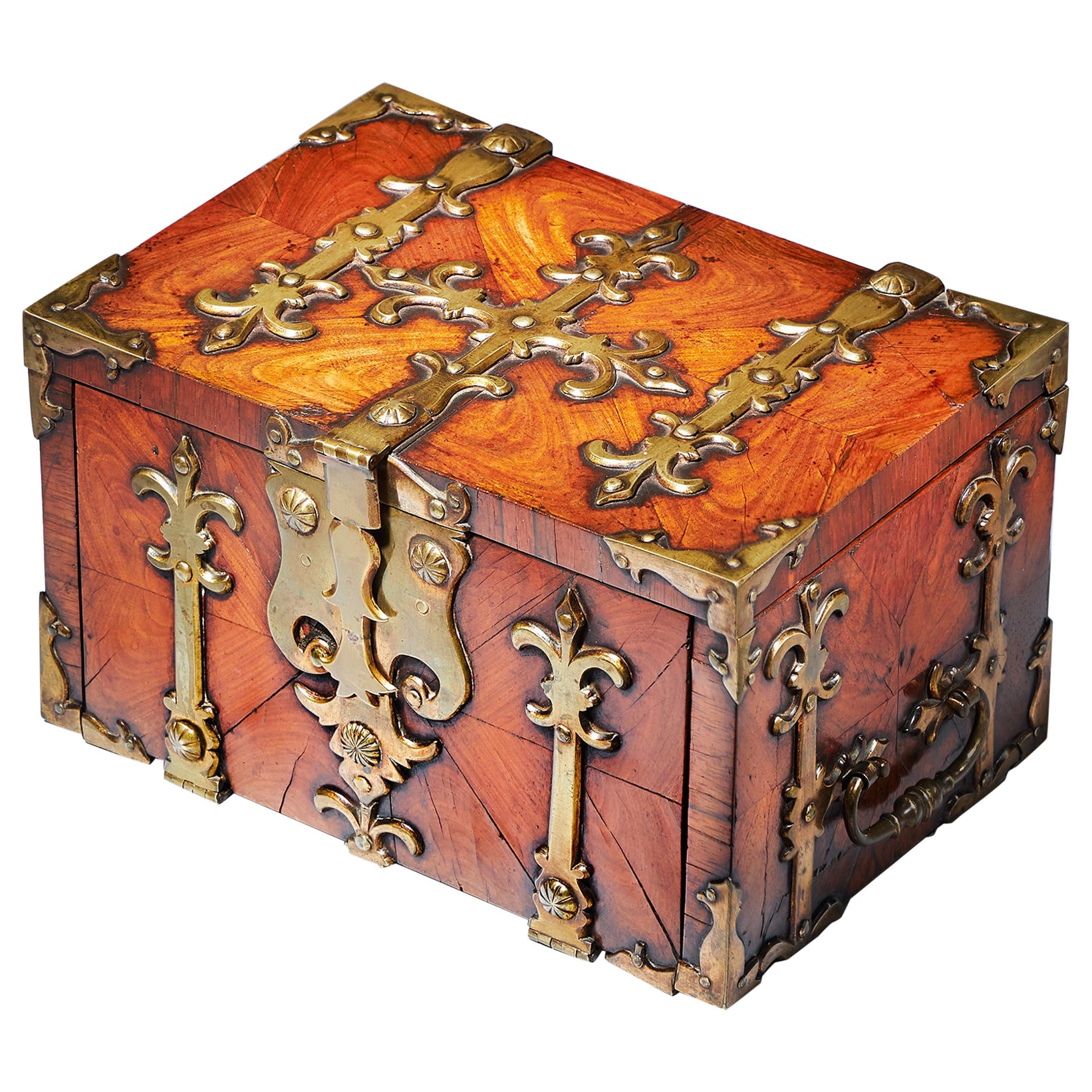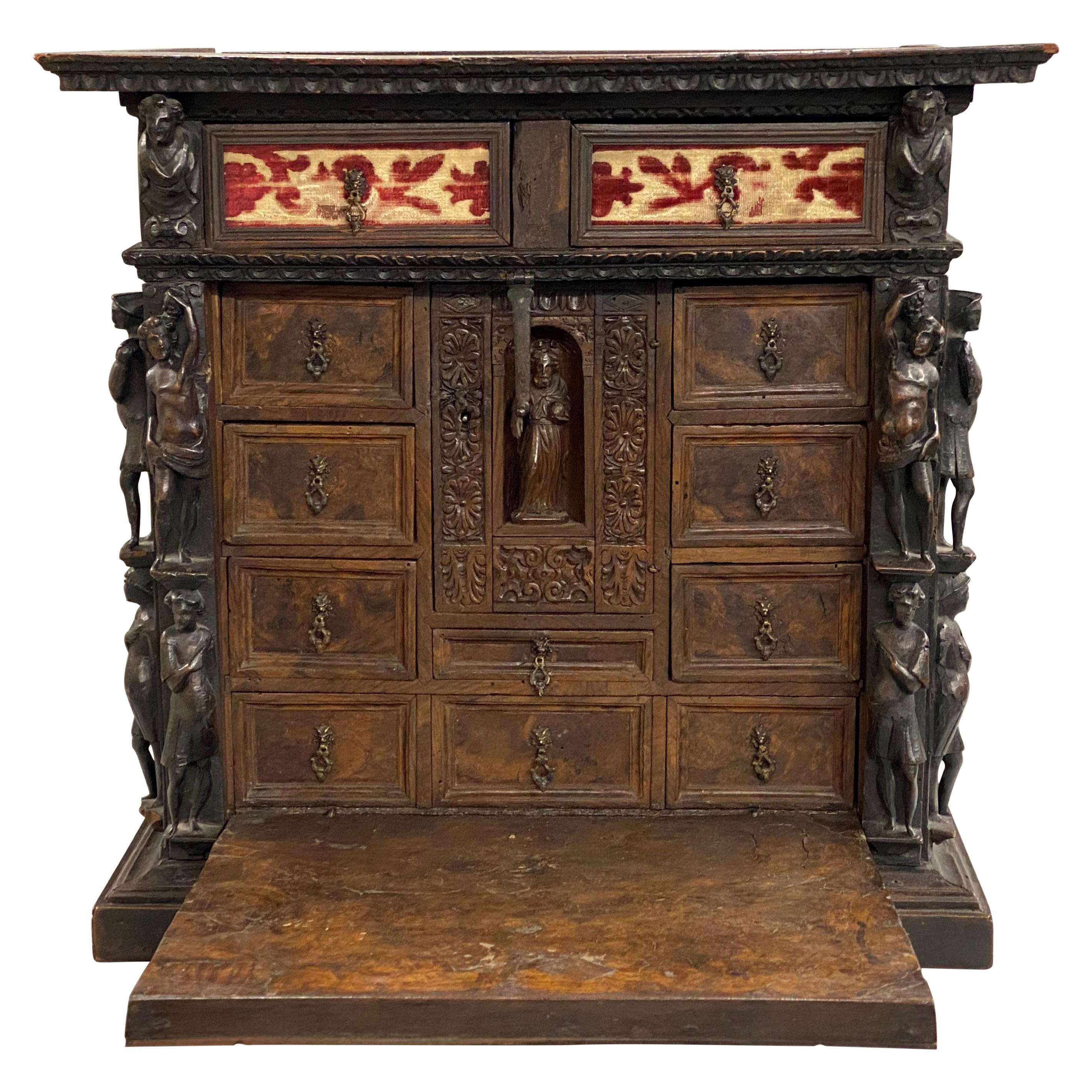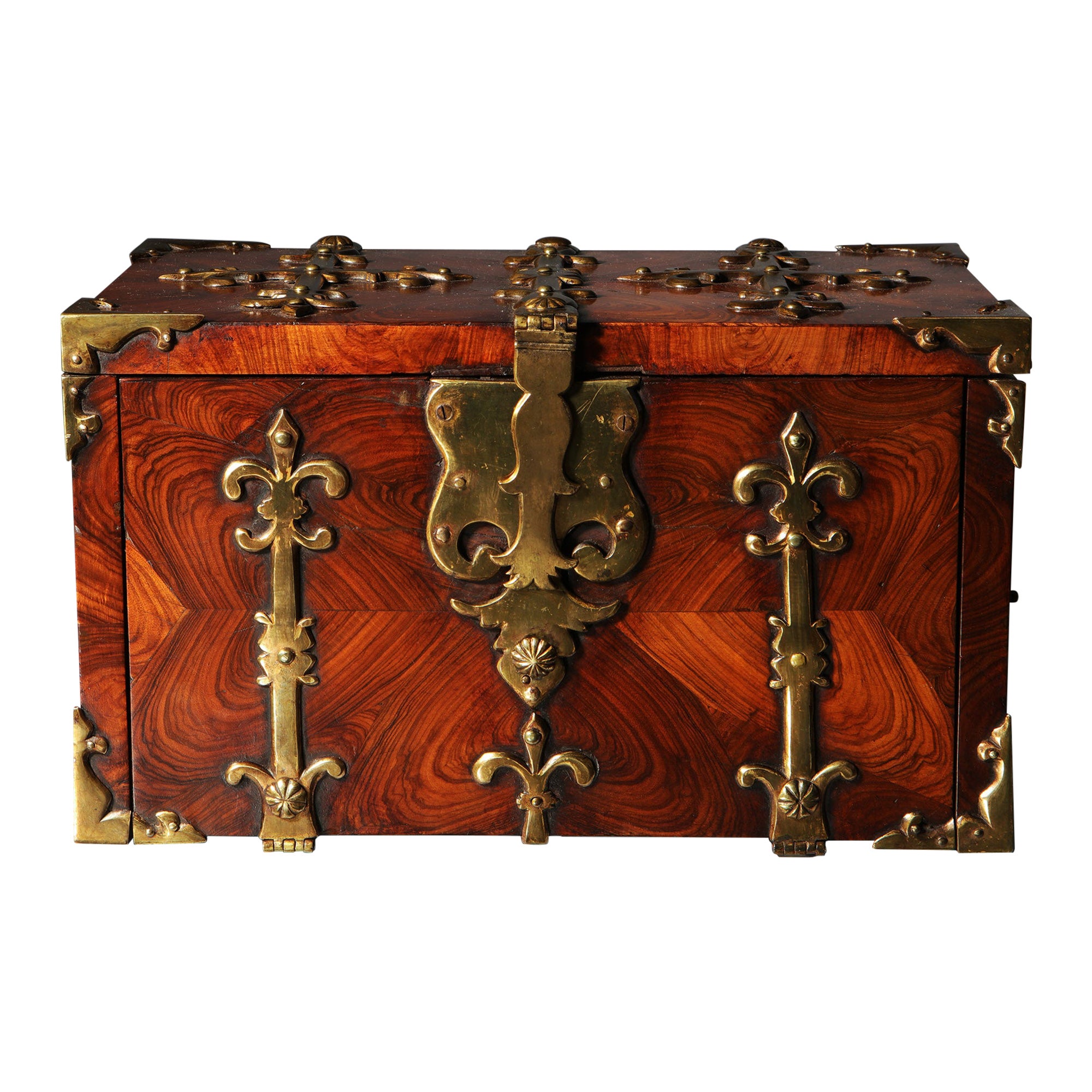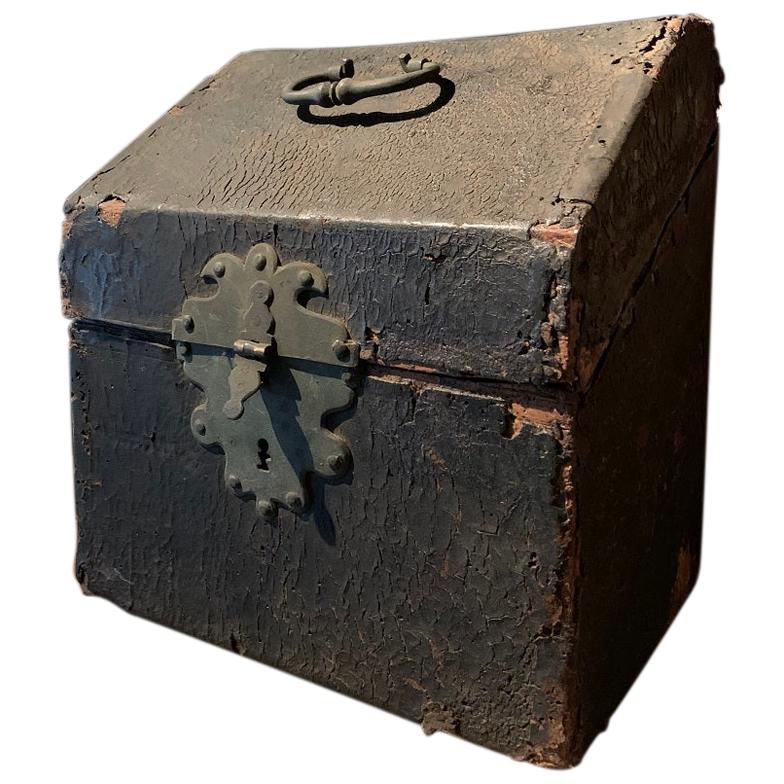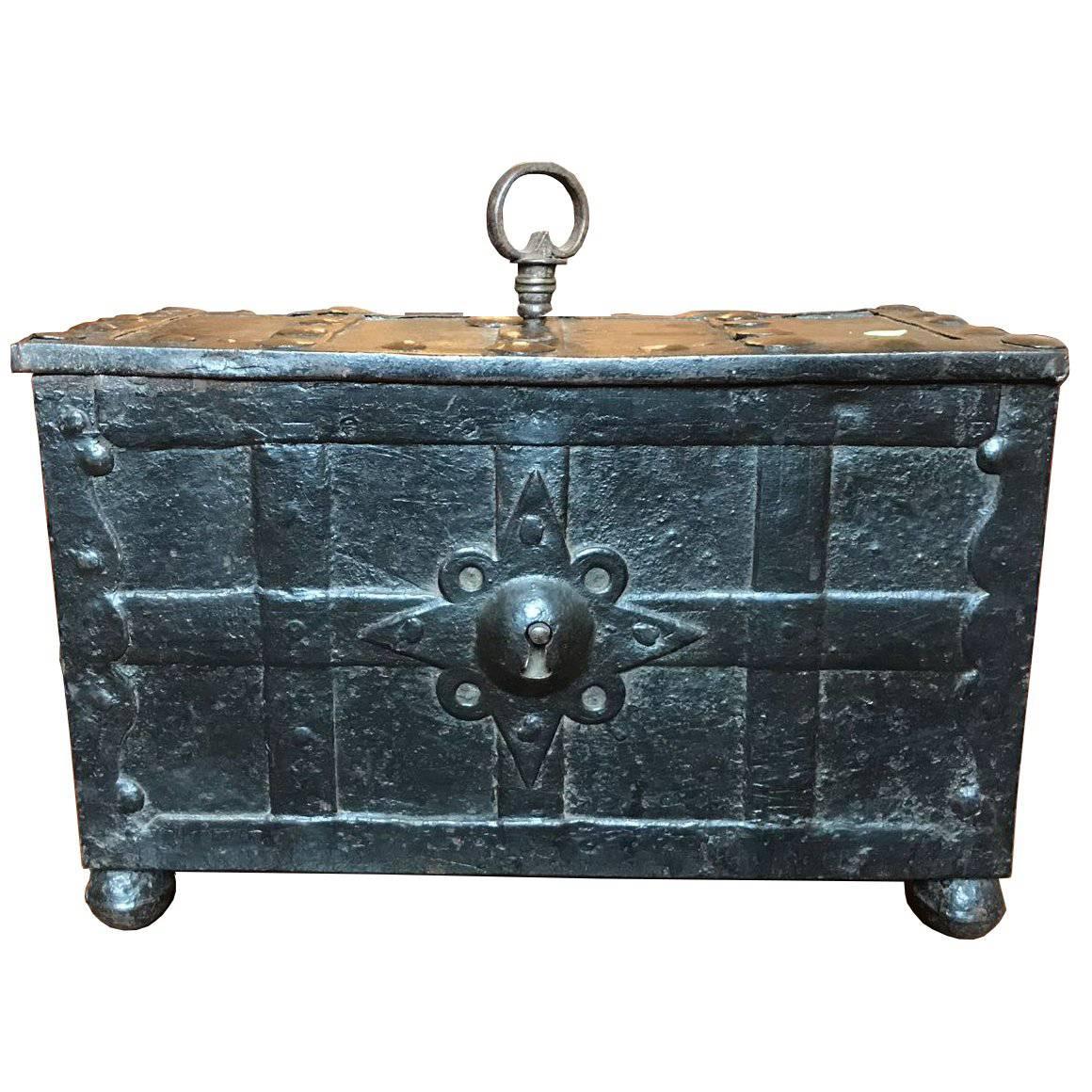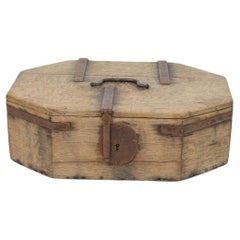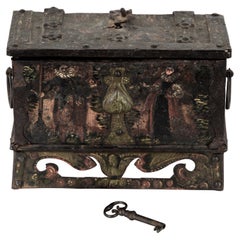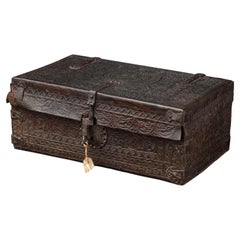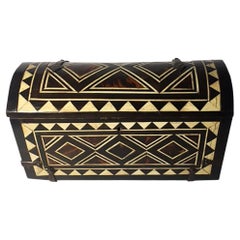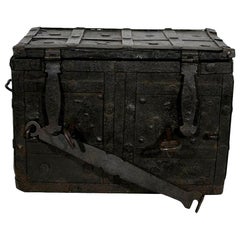
17th Century Spanish Iron with Wood Strongbox
View Similar Items
Want more images or videos?
Request additional images or videos from the seller
1 of 21
17th Century Spanish Iron with Wood Strongbox
About the Item
- Dimensions:Height: 11.82 in (30 cm)Width: 16.93 in (43 cm)Depth: 11.42 in (29 cm)
- Style:Baroque (Of the Period)
- Materials and Techniques:
- Place of Origin:
- Period:
- Date of Manufacture:circa 1650-1700
- Condition:Repaired: old repairs/restorations. Wear consistent with age and use. Minor losses. more pictures available on request.
- Seller Location:Buisson, FR
- Reference Number:Seller: 1700341stDibs: LU2525321523062
About the Seller
5.0
Platinum Seller
These expertly vetted sellers are 1stDibs' most experienced sellers and are rated highest by our customers.
Established in 2013
1stDibs seller since 2017
1,108 sales on 1stDibs
Typical response time: 2 hours
More From This SellerView All
- 18th Century Oak French Silver Chest StrongboxLocated in Buisson, FRBeautiful handmade oak silver chest. It was made to hold valuables such as silver coins, jewels or maps. This was the precursor to the modern day safe. It is...Category
Antique 18th Century French Primitive Decorative Boxes
MaterialsIron
$1,264 Sale Price49% Off - 17th Century, French Oak Coffer or BoxLocated in Buisson, FRExtremely old and beautiful weathered oak box . Several old repairs that only add to the charm. Rare find. France, circa 1600-1700 Weathered, small losses and old repairs. H:14,5cm ...Category
Antique 17th Century French French Provincial Decorative Boxes
MaterialsIron
$874 Sale Price49% Off - Small 17th Century, French Coffer or Box in LeatherLocated in Buisson, FRExtremely old box that is covered with leather and metal decorations. Rare find. France, circa 1600-1700 Weathered and some losses.Category
Antique 17th Century French Decorative Boxes
MaterialsLeather, Wood
$874 Sale Price49% Off - Small 17th Century, French Coffer or Box in LeatherLocated in Buisson, FRExtremely old box that is covered with leather and decorated with iron and brass. Rare find. France, circa 1600-1700 Weathered and some losses.Category
Antique 17th Century French Decorative Boxes
MaterialsIron
$874 Sale Price49% Off - Small 17th Century, French Coffer or Box in LeatherLocated in Buisson, FRExtremely old box that is covered with leather and metal decorations. Rare find. France, circa 1600-1700. Weathered and some losses.Category
Antique 17th Century French Decorative Boxes
MaterialsLeather, Wood
$874 Sale Price49% Off - 17th-18th Century Spanish Hand Forged Iron CandleholderLocated in Buisson, FRVery old wrought iron candleholder. Unique piece, Spain, circa 1650-1750.Category
Antique 17th Century Spanish Rustic Candlesticks
MaterialsIron
$434 Sale Price50% Off
You May Also Like
- 17th Century Nuremberg, German Iron Strongbox Jewels CasketLocated in Soquel, CAOrnately painted cash box with iron hardware and key, on the original stand. Interior of box measures 8"W x 4"H x 3.75"D Exceptional, small, late-renaissance, table-top, Nuremberg, iron, 'Wedding Box', strongbox or travelling safe with its original, naïve, painted decoration This is a rare and small example of these characterful, early models of transportable safes. The much larger traditional chest...Category
Antique 17th Century German Jacobean Decorative Boxes
MaterialsWrought Iron, Iron
$3,080 Sale Price20% Off - Boiled Leather Trunk, Spanish, 17th CenturyLocated in Bruxelles, BELeather trunk Spanish, 17th century Boiled Leather, wood and iron Measures: 22 x 53 x 32 cm. Provenance : - collection Metz-Noblat, Château de Clevant, France Rectangular trunk of the form and size of a small suitcase with wrought iron hinges and lock-plate. Wood, covered with leather, cut and embossed with every surface of the thick cow hide covered in interlace, zoomorphic features. The construction method is boiled leather, often referred to by its French translation cuir-bouilli: a process used to change flexible, vegetable-tanned leather into rigid, moulded objects. For shaping of the vegetable-tanned leather, heat and moisture were used, as indicated by the term boiled leather. No written medieval sources describing the production of decorated cuir bouilli objects survive, so knowledge of the process relies on the important studies of the Scottish leather historian John William Waterer. A large range of methods, materials and techniques could be used in various combinations. The vegetable-tanned leather, made supple with moisture and heat, was stuffed, shaped and nailed to the rigid wooden coffer support. The stuffing material was probably modeled beeswax or stearin wax. To shape the leather, to create its topography, « Cushions » were made by lacing a thread through an awl hole and attaching the flexible leather and stuffing to the rigid wooden support on the bottom. Then the decoration was done: lines were incised through the upper layer of the leather (epidermis) with different thicknesses of knives or needles. Contours were created with deep v-shaped cuts, decoration with thin incision and final details with a needle point. For the incision and pouncing stage, the leather was probably kept heated and moistened for suppleness. Once dry, the leather would be hard and rigid. the saturated leather is worked over a form, possibly even damp sand, with the pattern shaped using bone or wooden tools. Compare to metal, leather was lighter and it offered protection from cuts and punctures. Cuir bouilli objects were produced by specialist leather workers and needed skillful craftsmanship. The surface is filled with roundels shaped foliages enclosing animals, lions and peacocks. The foliate arabesques creating a vegetal connection tweet the animals create the impression of a lush verdant space . The vegetal pattern here employed in combination with geometrical pattern came from the pre-islamic artistic traditions of the Byzantine and Sasanian empires. An aspect of Islamic geometry Is the basic symmetrical repetition and mirroring of the shapes that create a sense of harmony. The decoration of this truck is inspired by the islamic « arabesque » a form of vegetal ornament composed of spirals, intertwining plants and abstract curvilinear motifs. An arabesque character is given to the birds of the decorations through extreme stylisation. This arabesque maintained the classical tradition of median symmetry, freedom in Detail and heterogeneity of ornament. The presence of the peacocks is a paradisiacal allusion: in popular Islamic literature they were among the original inhabitants of the garden of Paradise expelled with Adam and Eve. Peacock as a decorative motif may have originated in the West, despite their eastern provenance. There was an ancient belief that the flesh and feathers of peacock do not decay. This led to the peacock becoming a christian symbol for Christ’s resurrection. Renowned for their decorative wall hangings, seventeenth-century Spanish leatherworkers also produced utilitarian objects, such as this trunk. A similar trunk is on display at the Metropolitan museum of art ( 09.158.1). Related literature : Davies L. 2006. Cuir bouilli. Conservation of leather and related materials, 94-102, Oxford: elsevier Butterworth-Heinemann Grabar, Oleg. The Mediation of Ornament. Princeton: Princeton University Press, 1992 Gabriela Germana Roquez, "El mueble en el Peru en el siglo XVIII...Category
Antique 17th Century Decorative Boxes
MaterialsIron
$13,852 Sale Price30% Off - 17th-18th Century Spanish Colonial Box With Domed TopLocated in Dallas, TXSpanish Colonial inlaid bone and faux tortoiseshell domed top box. Original hammered iron hinges. Circa 1680-1740. Excellent condition and very rare.Category
Antique 1690s Spanish Decorative Boxes
MaterialsIron
- 17th C. Diminutive William and Mary Kingwood Strongbox or Coffre Fort, C. 1690Located in Oxfordshire, United KingdomA William and Mary Kingwood / Princes Oyster Strongbox or Coffre Fort of Diminutive Proportions, Circa 1680-1700, England. Adorned with highly decorative gilt brass strapwork and decorated entirely in knife cut oysters of kingwood, this box is fit for the most discerning of collectors. The large gilt brass shield-shaped clasp opens on a push-spring release to reveal a box interior lined in rosewood with one drawer and securing bolts. Once the lid is opened you can reach inside to slide the original gilt brass bolt lock to open the fall. Once the fall is open you will find a drawer lined in oak and simulated kingwood. The box appears decorative, but it was also very difficult to break open or steal. It has a strong lock to the centre and two bolts concealed in the sides, so that it could be screwed down into floorboards if necessary or that of a horse-drawn carriage. Strong boxes veneered in oysters of Princewood such as this were luxury objects. The cabinet-makers who would have constructed and veneered the carcase apparently sold them, often using tropical hardwood veneers, and mounted it with sets of mounts, handles and locks bought in from brass founders. The elaborate veneering and conspicuous gilded brass mounts show that the appearance of these objects was important. Thomas Pistor, of Ludgate Hill, London worked with the renowned cabinetmaker Gerrit Jensen...Category
Antique 17th Century British William and Mary Decorative Boxes
MaterialsKingwood
- 17th Century Italian Leather BoxLocated in Chicago, ILA stunning 17th century Italian leather covered wood trunk covered in brass nail heads, some spelling out a word on top, and with iron strap hinges a...Category
Antique 17th Century Italian Baroque Decorative Boxes
MaterialsLeather, Wood
- COUNTER CASH 17th Century FlemishBy Europa AntiquesLocated in Madrid, ESCOUNTER CASH 17th Century Flemish in walnut wood with inlays, consisting of two drawers and a drawer. Signs of use. Dim.: 31.5 x 44 x 27 cm good stateCategory
Antique 17th Century Dutch Baroque Decorative Boxes
MaterialsWood
$2,594 Sale Price20% Off
Recently Viewed
View AllMore Ways To Browse
Antique Strongbox
Iron Strongbox
Padlock Iron
Antique Iron Padlock
17th Century Strongbox
Strongboxes 17th
Rare Antique Padlock
Antique Art Deco Box
Floral Boxes
Pair Of Antique Boxes
English Wood Box
Antique Rosewood Boxes
Antique Rosewood Box
Antique Rosewood Box Boxes
Small Metal Box
Ornate Boxes
Ornate Box
Mirrored Decorative Box
